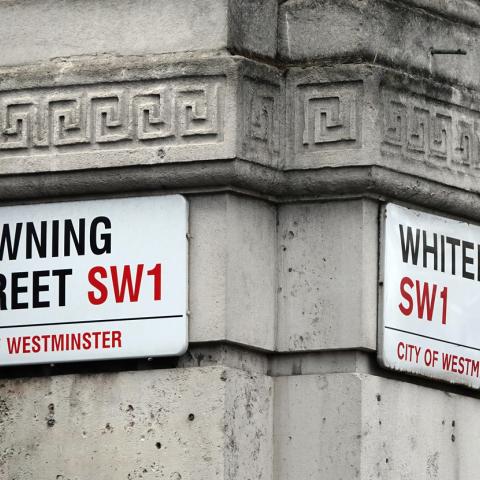Levelling Up or Mission Impossible?

Secretary Gove sets out 2,890 day deadline to Transform Britain.
By Phil Briscoe
While Ethan Hunt was regularly greeted with the challenge of “Your mission, should you choose to accept it….” it is the entire breadth of government that has today been handed not one, but twelve missions on which they have to deliver.
Levelling Up is not a new term, and in fact has been used in political circles since the 1840s, but Michael Gove’s publication of the White Paper today will today bring to an end one of the longest periods of pre-policy speculation we have seen in recent years. So, was it worth the wait and what exactly does levelling up mean?
The White Paper has something for everyone – over the next eight years, everyone will learn more, earn more, live longer in better houses and have more crime-free transport options to get them home to watch their box set on even faster broadband. It is the breadth of ambition which distinguishes this from other white papers and policy documents – this is not just another government policy, but it is the government policy. Across government departments, politicians and civil servants will be required to pursue the objectives of this policy and report on their progress.
Aside from the long-term missions, the immediate policy focus is on devolution, moving power away from Whitehall and enabling more local mayors. The White Paper today includes negotiations for a new Mayoral Combined Authority deal for York and North Yorkshire, along with an invitation to nine further areas to agree county and MCA deals in Cornwall, Derbyshire & Derby, Devon, Plymouth & Torbay, Durham, Hull & East Yorkshire, Leicestershire, Norfolk, Nottinghamshire & Nottingham and Suffolk. In addition, negotiations will commence for the West Midlands and Greater Manchester to extend their powers, and the two Andy’s will set the scene for the future of devolution.
Research and Development has often been talked about by the Government and the new commitment to invest more public money, while attracting more private money, also includes plans for three new Innovation Accelerators – place-based innovation clusters in Greater Manchester, the West Midlands and the Glasgow-City region. An additional £100m of government funding will support them to emulate the models in MIT-Greater Boston and Stanford-Silicon Valley, perhaps influenced by Chancellor Rishi Sunak’s time at Stanford.
Housing also features in the plans, with the 80/20 rule being scrapped and most of the £1.8bn of brownfield funding now being targeted towards the North and the Midlands. A crackdown on rogue landlords and the creation of a Decent Homes Standard for all homes in the Private Rented Sector will be accompanied by a new commitment to deliver more affordable social housing. Home ownership is also encouraged with a new £1.5billion Levelling Up Homebuilding Fund to provide loans to SMEs helping to deliver the regeneration agenda in priority areas.
The high street is a key part of the civic pride ambition and we already heard about the first 20 regeneration projects, led by Wolverhampton and Sheffield. In addition, the White Paper includes a further 68 local authorities to received support from the High Streets Task Force and a new power for local councils will give them the power to make landlords fill vacant shop units if they have been empty for too long.
At the heart of the White Paper are a series of 12 missions which in summary set the following objectives by 2030:
- Pay, employment and productivity to rise in every UK region.
- A 40 per cent increase in public R&D funding outside of the Greater South East.
- Local public transport connectivity across the UK similar to London standards.
- Nationwide broadband improvements, with 4G for all and 5G for the majority.
- Improvements for primary school education with 90 per cent of children reaching expected standards in reading, writing and maths.
- An increase in people completing high-quality skills training in every area of the UK.
- A rise in Healthy Life Expectancy while closing the gap between the highest and lowest areas.
- An improvement in well-being in every part of the UK.
- An increase in people’s satisfaction and pride in place of their local area, in every area of the UK.
- An increase in first-time buyers in all areas, with a 50 per cent fall in the number of non-decent rented homes.
- A fall in violent and neighbourhood crime.
- A devolution deal for all parts of England that want one.
The promised legislation, the Levelling Up and Regeneration Bill, will include a range of public metrics so that progress can be tracked, and the Government will publish an annual report. However, there is some disconnect between some of the missions that can be clearly controlled and influence by government (such as a funding increase) and those that are subjective (such as civic pride and wellbeing), and has any government ever before promised to make people live longer?!
Some will say that there is nothing new in the White Paper, and it is true that much of it has already been trailed, but the publication of the document helps to pull all the themes together and provide some clarity on what levelling up means. Many will say that the headlines are fine, but what about the detail and only time will tell, as the legislation is progressed and as government resources are deployed towards these objectives.
While the long-term focus is on delivering against these targets by 2030, the more immediate target will be how the pre-election annual report looks in 2022 or 2023. The General Election message from the Conservatives will be to give them another term to finish the job, but the voters will be judging what they deliver in this term first – today Michael Gove has not only fired the starting pistol on levelling up, but also on the campaign for the next election.
The Levelling Up agenda was really devised and expanded in the aftermath of the Brexit vote and the sense that many communities felt left-behind, not only by Brussels but also by London. The Conservative successes in the Red Wall seats of 2019 provided some fixed-term context to deliver change or lose those seats again. However, the scale of the ambition and the relative short time scale for delivery will present some significant challenges to deliver on all of these metrics. After all, the North-South divide has been referenced for almost 1,000 years and it is even 41 years since The Specials sang about deindustrialisation and urban decay in Ghost Town, so can all of this be changed in less than nine years.
I doubt anyone could argue with the ambitions of the White Paper today, but time will tell how the delivery unfolds over the next 2,890 days before that 2030 deadline. However, while Secretary Gove promises to enshrine those missions and reporting structures in legislation, the more pressing question in the midst of the backbench partygate unease is whether this government will self-destruct in five seconds!









